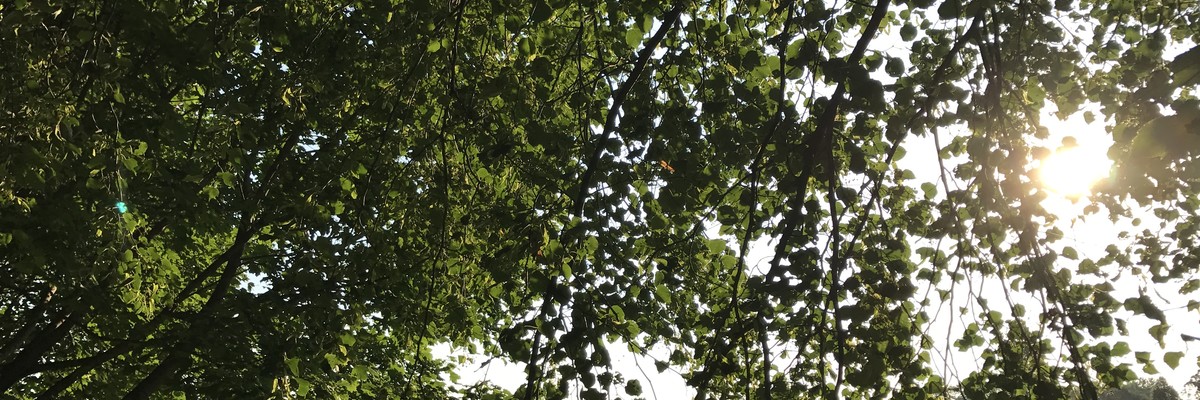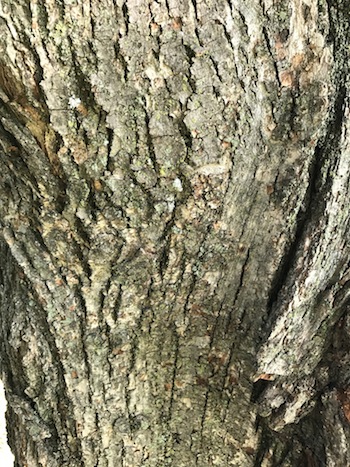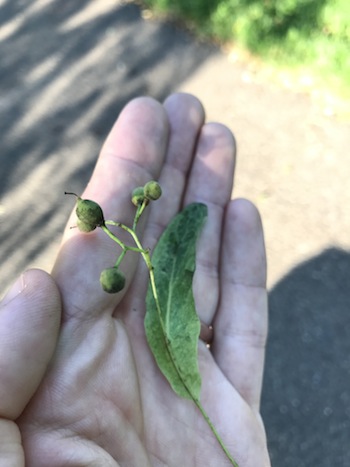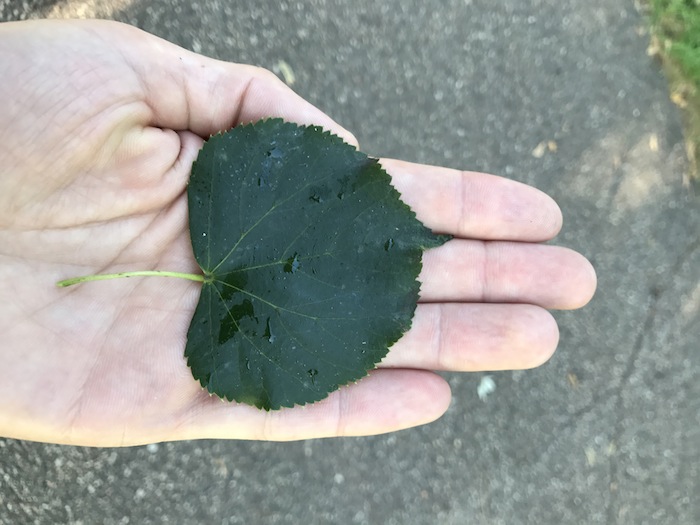
Description:
Littleleaf linden is a European relative of American basswood (Tilia americana) that is widely planted in the United States. Leaves are simple, alternate, and dark green. They are smaller than the leaves of American basswood, but are also heart-shaped with finely toothed margins. Flowers are very similar to American basswood, with clusters of 5-11 small, yellow-green blooms and similar colored bracts. Female flowers develop into winged nutlets that fall from the tree midsummer.
Honey bees are very attracted to littleleaf linden flowers, and linden honey can be high value. The wood is soft and not often used for lumber, but sometimes for drawer sides in inexpensive furniture. The species can handle heavy pruning, and is therefore sometimes grown as a hedge. It can also be espaliered in Europe, or used in bonsai. It is relatively resistant to urban pressures, and is therefore a very popular street tree. The Unter den Linden, a major boulevard in central Berlin, for example, is lined with littleleaf lindens. Recent research however suggests that weak root systems in heavily disturbed urban areas contributes to high urban mortality of the species.
Tilia cordata was also one of the species to trees used in a recent study from the University of Minnesota considering the effects of different tree species on decomposition and forest floor dynamics.
Most lindens on the St. Paul Campus are American basswoods; this particular tree’s neighbor is in fact an American basswood and can be used as a comparison.
There is currently debate about the appropriate taxonomical family for Tilia species, with some researchers promoting the family name Tiliaceae, the Tilia family while others suggest that family be enveloped by Malvaceae, the mallow family.
Issues:
Japanese beetles can completely defoliate littleleaf lindens if populations are high enough.
Other Resources:
Unted den Linden in Berlin
Photo Source/CC by 2.0





